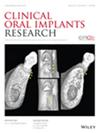Zirconia Barriers in Bone Regeneration Procedures: A Scoping Review
Abstract
Purpose
To identify the current status and development of zirconia barriers in bone augmentation procedures in the maxillofacial area of adult human patients.
Materials and Methods
Two independent reviewers conducted an electronic literature search in PubMed/MEDLINE, Web of Science, Scopus, EBSCO, the Cochrane Library, and LILACS databases, as well as a manual search to identify eligible clinical studies up to April 15, 2024. The protocol was designed in accordance with the Preferred Reporting Items for Systematic Reviews and Meta-Analyses extension for Scoping Reviews guidelines.
Results
The initial electronic search resulted in 240 studies. The systematic application of inclusion and exclusion criteria resulted in 6 articles that met the purpose of the study. The included articles were 5 clinical case series and 1 case report, published between 2016 and 2023. Only 4 articles reported histological studies. A total of 40 sites regenerated with zirconium barriers were reported in 30 patients. Results were obtained with variability in bone gain values, between 0.9–8.0 mm horizontally and 1.4–12.0 mm vertically, in addition to a 30% complication rate.
Conclusions
Although the results obtained in the studies included in this scoping review are favorable with respect to the amount of bone formation and the reduced surgical time required, the number of complications is considered high. Moreover, due to a limited number of patients included in the case series and the short duration of follow-up, additional studies including a control group are required.

 求助内容:
求助内容: 应助结果提醒方式:
应助结果提醒方式:


